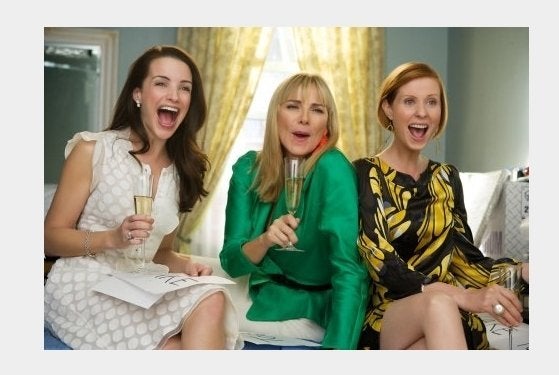
I once had the opportunity to hear four Sex and the City writers on a panel discussing television writing and its impact on their lives. I recall being struck by how typical these ladies seemed, though they were extremely in touch with how average they actually were. Because they were young women struggling to balance their careers with their pursuit of love, they first looked inward when seeking inspiration for the characters they were creating. The writers room became a place for both creativity and, at times, therapy.
It was during one of those rigorous writing sessions when the phrase "He's just not that into you" arose. It was said to one of these writers by a male counterpart who wanted to awaken her to the reality of her dying relationship. The phrase has since entered our collective lexicon as the subject of a novel and an upcoming movie. For the woman who was on the receiving end of this hard-to-accept news many years ago, I'm sure it's a bit strange to see the phrase plastered on New York City transit buses.
But that's what appears to have made the SATC franchise so popular. It can be intensely personal and uncomfortably relateable. So when another television writer, Maria Semple, took to writing her first novel, she knew that she could only write one way, as a television writer. Last night, as part of her book tour, Semple spoke with Sex and the City executive producer, Darren Star, about the process of writing her novel, This One is Mine.
She said she worried about the same elements she considers with any television script -- developing an outline and knowing where the story is headed, dividing the book into scenes, implanting cliffhangers into the ends of chapters, and creating drama through harsh actions and decisions. Semple said that she used herself and her life whenever possible, but still shaped an exaggerated, fantastic version of her world. This is what I call fictionalizing non-fiction.
One of the topics that Star and Semple explored was how Semple's characters in the novel are imperfect but you come to have affection for them and to connect to them. Semple confessed that she specifically tried not to use her television writing tactics and influence to make the characters more sympathetic, instead hoping to paint a more real portrayal of how difficult and complicated people can be. Star explained that although the networks tend to push for sympathetic characters on their programs, that can conflict with the art of good storytelling.
This conversation brought up the age-old debate about what types of characters we, as a tuned in audience, prefer to see. Should they be people we recognize from our own lives or should they be characters that exist in a fantasy world where we wish to escape? The answer last night seemed to be that it all depends on the medium, the content and the mission. I think even within a single program that mission can change with the times. And with it the story being told.
Take The Real World as an example. This is a show that, in 1992, set out to tell the true stories about a group of young people's ambitions, conflicts and struggles. In its first season, the producers didn't even know how things would shape up or if there would even be enough drama to keep the show on the air. Yet, over the course of its stay on MTV, the show evolved into something else. By the mid-90's, ratings rose with the outspoken, outrageous characters who stirred up drama inside the house. Soon the show became less about seeing seven individuals embarking on personal journeys and more about keeping the group together for as much time as possible because eventually things would blow up. And they usually did.
Despite its recent history, the show has finally returned to its roots. Judging based on the premiere that aired last week, it looks like this season will follow these eight strangers as they try to get discovered or to lay some professional groundwork in New York City. Gone are the days of communal tasks and assignments. There's now room for them to explore, grow and co-exist.
All of the chosen characters this season meet Semple's criteria. They are interesting because they are complicated, and some may even remind us of ourselves or other people we know. Tune in tonight to see what happens.